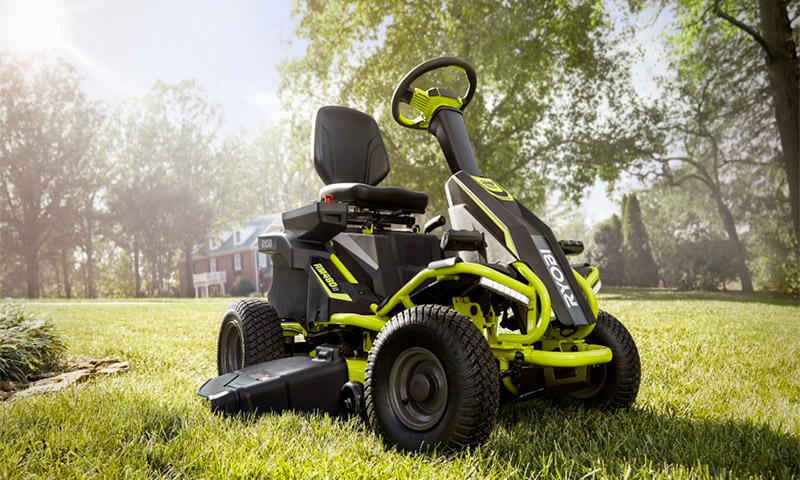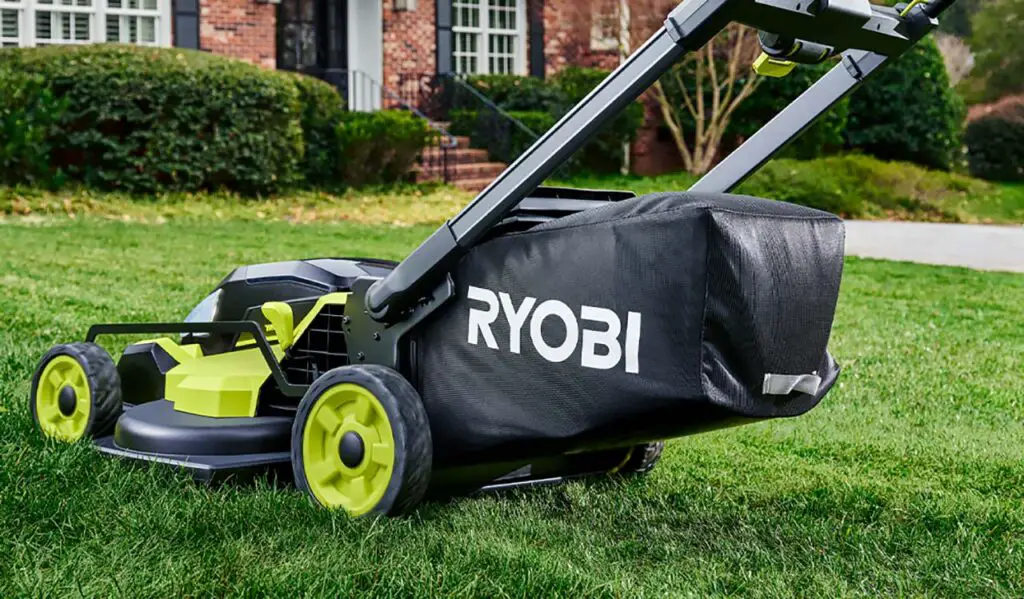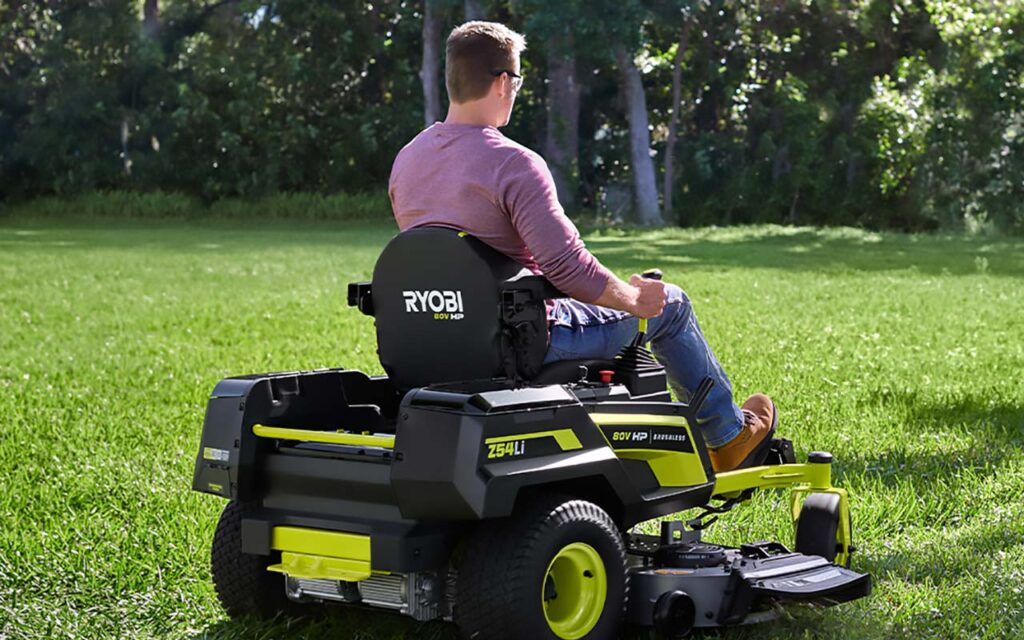Troubleshooting A Ryobi Lawn Mower Not Cutting Grass: Step-by-Step Fixes
Find yourself frustrated with your trusty Ryobi lawn mower not cutting grass the way it’s supposed to?
Don’t worry, we’ve all been there.
Lucky for you, I’m here to help you troubleshoot the issue and get your mower back on track.
So, let’s dive into the most common reasons your Ryobi lawn mower might be slacking and what you can do about it.
Common Reasons A Ryobi Mower Has Grass Cutting Problems
Here’s a look at the most common problems with Ryobi mowers that are responsible for it not cutting grass like you expect.

1. Dull or Damaged Blades
Alright, let’s kick things off with the blades.
If your mower’s blades are dull or damaged, there’s no freaking way it’s gonna cut grass effectively.
A dull blade will just rip and tear at your grass, leaving it lookin’ sad and unhealthy.
So, to fix this, give your blades a good sharpening or just replace ’em if they’re beyond repair.
Trust me, sharp blades make for a clean cut and a happy lawn.
Plus, your mower won’t have to work as hard, which means a longer life for your trusty machine.
2. Incorrect Blade Height Adjustment
If your Ryobi mower’s blade height is set too high or too low, you might end up with uneven, patchy grass or even scalping your lawn.
And let’s be real, nobody wants that.
To avoid this, adjust your blade height to the sweet spot – usually between 2.5 and 3.5 inches – and watch your lawn transform.
Just keep in mind that the ideal height can vary depending on the grass type and time of year, so do a little research to make sure you’re giving your lawn the TLC it deserves.
3. Uneven or Improper Cutting Deck Height
Now, let’s take a look at that cutting deck.
If it’s uneven or set too high or low, it can mess with your mower’s ability to cut grass like a champ.
An uneven deck can lead to an uneven cut, and nobody wants a lumpy, bumpy lawn.
So, make sure your cutting deck is level and at the right height for your grass type, and you’ll be good to go.
Don’t be afraid to bust out the ol’ owner’s manual if you need a refresher on how to adjust your deck – that thing’s got your back.
4. Lawn Mower Motor Issues
If your Ryobi mower’s motor ain’t running like it should, it’s gonna have a tough time cutting grass properly.
If your motor’s acting up, it might be time for some maintenance like cleaning the air filter, checking the spark plug, or even a replacement.
Don’t hesitate to consult a professional if you’re unsure how to tackle this issue.
There’s no shame in calling in the big guns to keep your mower in tip-top shape.
5. Overgrown or Wet Grass
Here’s the thing: your lawn mower ain’t gonna work its magic if you’re trying to cut overgrown or wet grass.
When your grass is too long, your mower can struggle to power through, and you’ll end up with a less-than-stellar cut.
And when it comes to wet grass, not only is it harder to cut, but it also clumps up and sticks to your mower, causing all sorts of headaches.
So, keep your grass in check by mowing regularly, and avoid mowing when it’s wet to prevent clumps and other issues.
Your mower (and your lawn) will thank you.
6. Obstructions or Debris in the Cutting Deck or Around the Blade
Sometimes, stuff can get caught in the cutting deck or around the blade, making it difficult for your mower to cut grass.
This can be anything from twigs and rocks to clumps of grass or even a rogue kids’ toy.
So, always keep your mower clean and free of debris to keep it running smoothly.
Before each mow, take a quick walk around your yard to pick up any debris that could cause problems.
And after you’re done mowing, give your mower a good once-over to make sure everything’s in order.
With a little bit of maintenance and care, you’ll keep your Ryobi lawn mower cutting grass like a pro for years to come.
7. Worn or Loose Belts
Last but not least, let’s talk about belts.
You know, those rubber things that keep your mower’s engine and blades connected and working together?
Well, if those belts are worn out or loose, it can really put a damper on your mower’s cutting game.
It’s like trying to run in saggy pants – ain’t gonna work, right?
So, if your Ryobi lawn mower is struggling to cut grass, you might wanna check those belts.
If they’re loose, you can try tightening ’em up to see if that does the trick.
But if they’re worn, cracked, or damaged, you’re better off just replacing them altogether.
Trust me, it’s worth the investment to keep your mower running at its best.
And hey, if you’re not comfortable messing with belts and all that, don’t be afraid to call in a pro.
They’ll have your mower back in tip-top shape in no time, and you can get back to enjoying a perfectly manicured lawn.
Detailed Solutions for Each Ryobi Mower Problem
Now that we’ve covered the most common reasons your Ryobi mower might not be cutting grass, let’s dig into the nitty-gritty of fixing those problems.
Just follow these detailed solutions, and you’ll have your mower running like a dream in no time:

1. Sharpening or Replacing Dull or Damaged Blades
If notice the blades are dull, just sharpen ’em up with a file or a grinder.
Just follow the original blade angle, and make sure to remove any nicks or burrs.
If your blades are damaged beyond repair, it’s time to hit the store and grab some new ones.
Replacing your blades is as easy as removing a few bolts, swapping out the old for the new, and tightening everything back up. Piece of cake!
2. Adjusting the Blade Height for Optimal Cutting
Adjusting your Ryobi mower’s blade height is a cinch.
Just locate the adjustment lever or knobs on your mower (usually near the wheels), and set the height to the desired level.
Remember, the sweet spot is usually between 2.5 and 3.5 inches for most grass types.
Once you’ve got it set, give it a test run to make sure your grass is cut evenly.
3. Ensuring the Cutting Deck is Level and at the Correct Height
Leveling your cutting deck ain’t rocket science, folks.
Just park your mower on a flat surface, get out a tape measure to check the distance from the ground to the deck at each corner, and adjust the deck height until it’s level.
If you need help, consult your owner’s manual for specific instructions on how to adjust your cutting deck height.
4. Troubleshooting and Fixing Motor Issues
If you’re dealing with motor issues, start by checking the basics like spark plugs, air filters, and fuel lines.
If you’re still having trouble, it might be time to call in a pro.
They’ll be able to diagnose and fix any motor issues you’re dealing with, so you can get back to mowing ASAP.
5. Mowing Grass When It’s Dry and Maintaining a Proper Mowing Schedule
Wet grass is a pain to mow, so do yourself a favor and stick to mowing when it’s dry.
Plan your mowing schedule around the weather, and aim to mow your lawn every 7-10 days, depending on the grass type and growth rate.
Your lawn will thank you, and your mower will run like a champ.
6. Inspecting and Cleaning the Cutting Deck and Blade Area to Remove Obstructions or Debris
After every mow, give your cutting deck and blade area a quick once-over to make sure there ain’t any debris or obstructions.
If you find anything, just grab a brush or a scraper and clear it out.
Trust me, keeping your mower clean is gonna save you headaches in the long run.
7. Replacing or Tightening Worn or Loose Belts
Loose or worn belts can cause your mower to lose power or even stop working altogether.
To fix this, simply check your belts for wear and tension.
If they’re loose, tighten ’em up by adjusting the tensioner pulley.
If they’re worn, it’s time for a trip to the store to grab some new ones.
Replacing belts might take a bit of elbow grease, but it’s totally doable.
Just follow the instructions in your owner’s manual or look up a video tutorial to guide you through the process.
Once your belts are back in tip-top shape, your mower will be ready to tackle that lawn like a boss.
Safety First: Precautions to Take When Troubleshooting and Fixing Your Mower

Before we wrap things up, let’s talk safety.
I know it’s tempting to just dive in and start tinkering with your mower, but trust me, taking a few precautions will save you a world of trouble.
So, before you get down and dirty with your mower, make sure to:
- Disconnect the spark plug (safety first, folks): This is super important, and I can’t stress it enough. Disconnecting the spark plug prevents your mower from accidentally starting while you’re working on it. Better safe than sorry, right?
- Wear protective gear (like gloves and safety glasses): When you’re dealing with sharp blades and other mower parts, you’ll wanna protect yourself. Throw on some gloves and safety glasses to avoid any accidents or injuries.
- Avoid working on your mower when it’s hot or running: Let your mower cool down before you start working on it. Trust me, burnt fingers and spilled oil ain’t a good time. Plus, it’s just safer to work on a cool, stationary mower.
- Consult your owner’s manual or a professional if you’re unsure about anything: No shame in asking for help, folks. If you’re not sure how to fix something or need more guidance, reach out to a pro or check that trusty owner’s manual. It’s better to ask for help than risk damaging your mower or, worse, injuring yourself.
Final Word
Alrighty, now that we’ve covered the most common reasons your Ryobi lawn mower might not be cutting grass and how to fix ’em, as well as some safety precautions and maintenance tips, you should be ready to get your mower back in action.
Remember, proper maintenance and care go a long way in preventing issues and keeping your mower running smoothly.